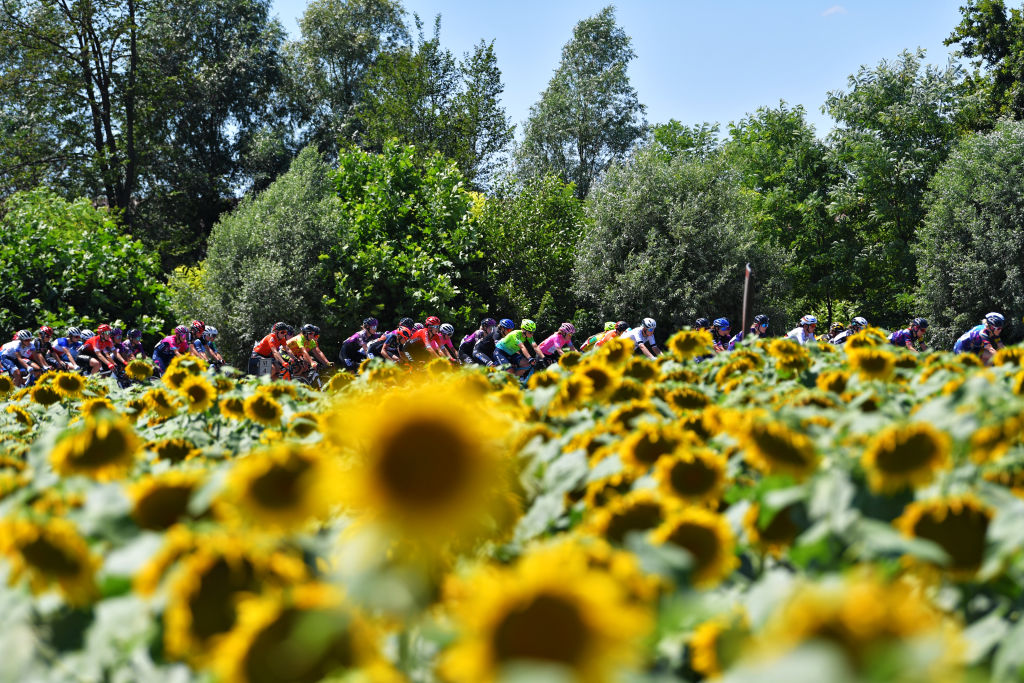
There were doubts the 2023 Giro d'Italia Donne would even happen, but even though much of the details were announced in the 11-hour, race organisers have managed to pull together the nine-day event set to take place from June 30 to July 9.
The Giro d'Italia Donne, directly followed by the Tour de France Femmes avec Zwift from July 23-30, will kick off a busy July for the women’s peloton.
In recent years, the race has been dominated by Dutch women, the country taking ten victories since 2010, with Marianne Vos (now Jumbo-Visma) winning three, now-retired Anna van der Breggen (SD Worx) winning four, and Annemiek van Vleuten (Movistar) winning three overall titles.
There is only one woman who has won five titles; Fabiana Luperini, who won the event from 1995 to 1998 and then again in 2008. The Italian is also the only woman to have won the race three consecutive times in her career.
If Van Vleuten captures that maglia rosa this year, she will add a fourth title to her palmares and become only the second woman to win three consecutive editions. However, as has been seen in the rest of the Women’s WorldTour calendar, times are changing and new challengers are lurking.
Cyclingnews highlights the biggest talking points ahead of this year's Giro d'Italia Donne.
Join Cyclingnews' coverage of the 2023 Giro d'Italia Donne with race reports, results, photo galleries, news and race analysis.
TV coverage confirmed but how will the cash-strapped organisation cope?
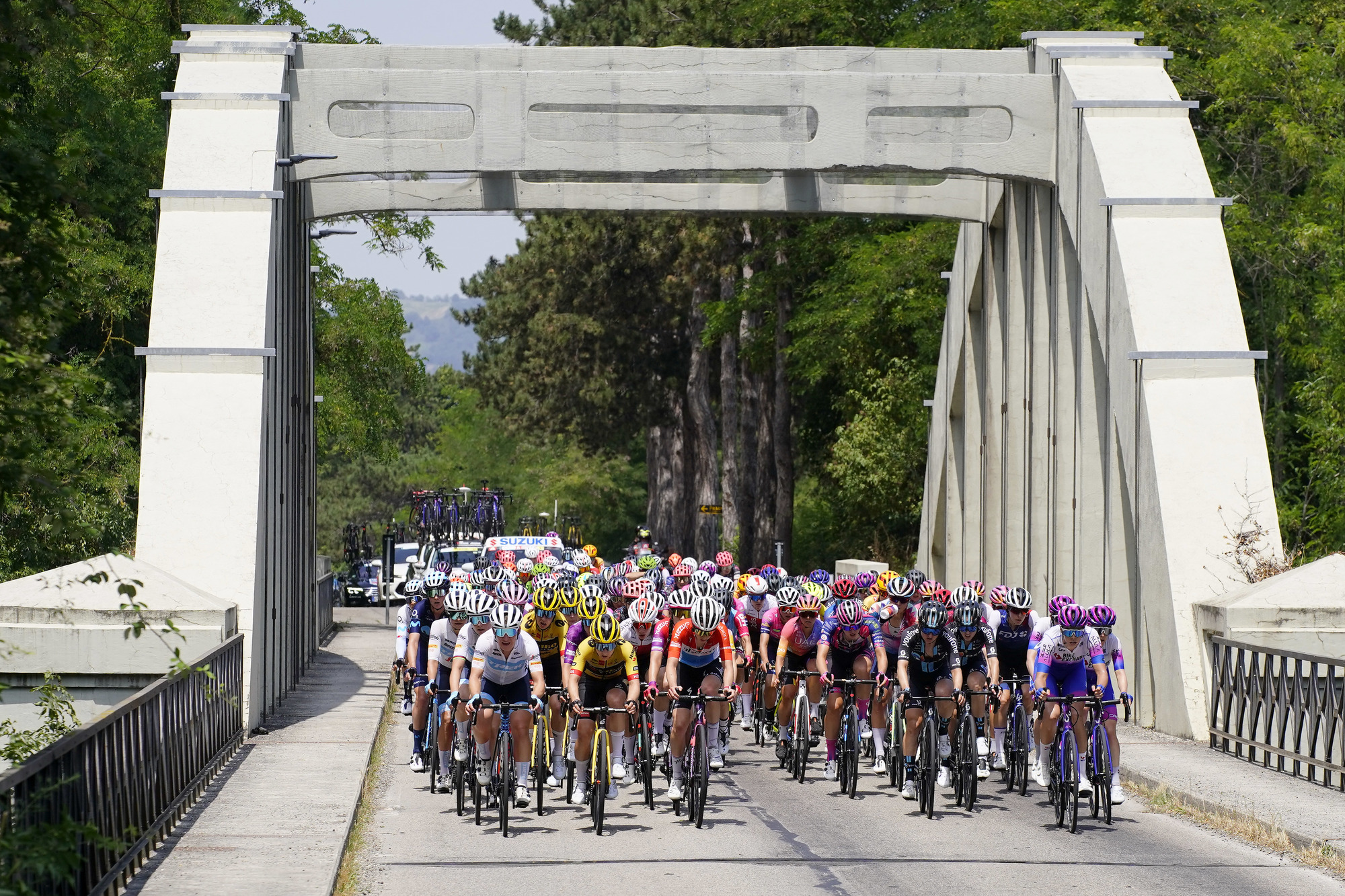
For years the Giro d'Italia Donne was organised by a team led by Giuseppe Rivolta, but its relegation from the Women’s WorldTour after failing to provide the required TV coverage in 2020 brought a change.
Milanese media company PMG had created the TV highlights that year and 12 months later, they took the race over in collaboration with Starlight under the guidance of Roberto Ruini, though with Rivolta still involved as route and race director.
This brought better organisation and media coverage, which again improved in 2022. Not only were there proper press rooms and journalists invited, but the route was also published earlier than was customary, and Ruini announced an ambitious plan to start this year’s race in Rome as well as an end to the clash with the men’s Tour de France, which historically stifled coverage.
Then everything went quiet.
In February, the Italian Federation (FCI) announced organisers of the men’s Giro d'Italia, RCS would take over organising the women’s race event in a package with the under-23 Giro. Following the announcement, Starlight/PMG remained tight-lipped about this year's event.
Stage start and finish towns leaked out in late April and were confirmed later that month. With one week to go, none of the event’s social media accounts had been updated since last year, and only after an emergency meeting of the Italian Federation was the website updated with any more than the slightest detail.
That meeting finally confirmed the Federation had agreed to pay for the live TV coverage required to maintain the race’s position on the WorldTour, something race organisers were unable to achieve.
That decision finally confirmed the race would happen. Whether the FCI’s decision was a gesture of magnanimity towards Starlight or whether they were afraid without coverage, the race would be relegated from the WorldTour, possibly nullifying the deal with RCS, we might never know.
Starlight/PMG have certainly improved the race organizationally from previous editions, the days of start town car parks littered with broken glass, cars in the start funnel 10 minutes before the rollout, and riders packed into four-woman hotel rooms are gone.
However, the latest issues reveal a possible budgetary black hole, and it hardly inspires confidence around the actual execution of the event next week.
Here’s hoping.
Annemiek van Vleuten going for four
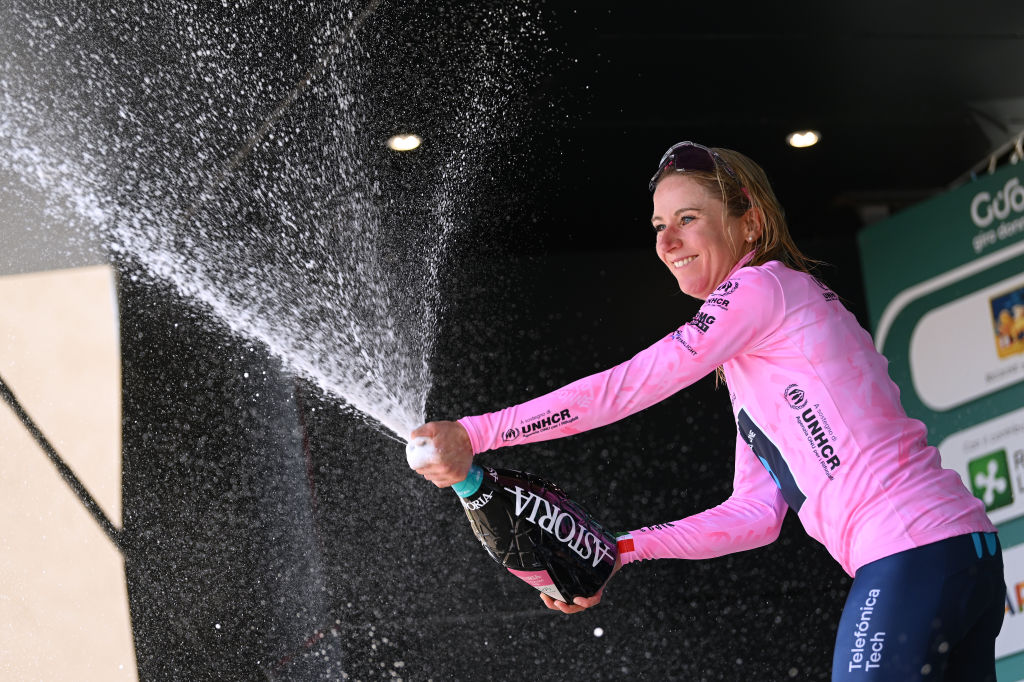
After being the dominant rider of recent seasons, Annemiek van Vleuten (Movistar) will close her career at the end of this year and will be keen to leave Italy next month with a fourth maglia rosa.
A fourth title in the 34th edition of the Giro will not make her the race’s most prolific winner, that honour goes to Fabiana Luperini, who won five editions between 1998 and 2008, but it will put her joint second with her Dutch compatriot, Anna van der Breggen.
The two were fierce rivals before Van der Breggen retired to become a sports director at SD Worx at the end of 2021. They’ve shared victory at all of the last six editions, each finishing on the podium behind the other in at least one of their Italian victories.
With her rival retired, Van Vleuten’s 2022 victory seemed inevitable all the way through the 10 stages, but it was her smallest winning margin, as the new kid on the block Marta Cavalli (FDJ-SUEZ), finished just 1:03 back.
However, while the Italian has one race win to her name so far in 2023, this season has not been plain sailing for Van Vleuten either.
While she won the general classification at La Vuelta Femenina last month, she did not win a stage and is yet to do so in any race this season. The last time she reached June 30th without achieving that feat was 2009, a year without a victory.
Van Vleuten will be keen to make amends, and victory in the opening time trial is a real possibility, she certainly has the courage to defend for eight more stages, but one of her best-suited stages will likely be on stage 5, which includes the Passo (Pian) del Lupo.
SD Worx riding a wave of confidence
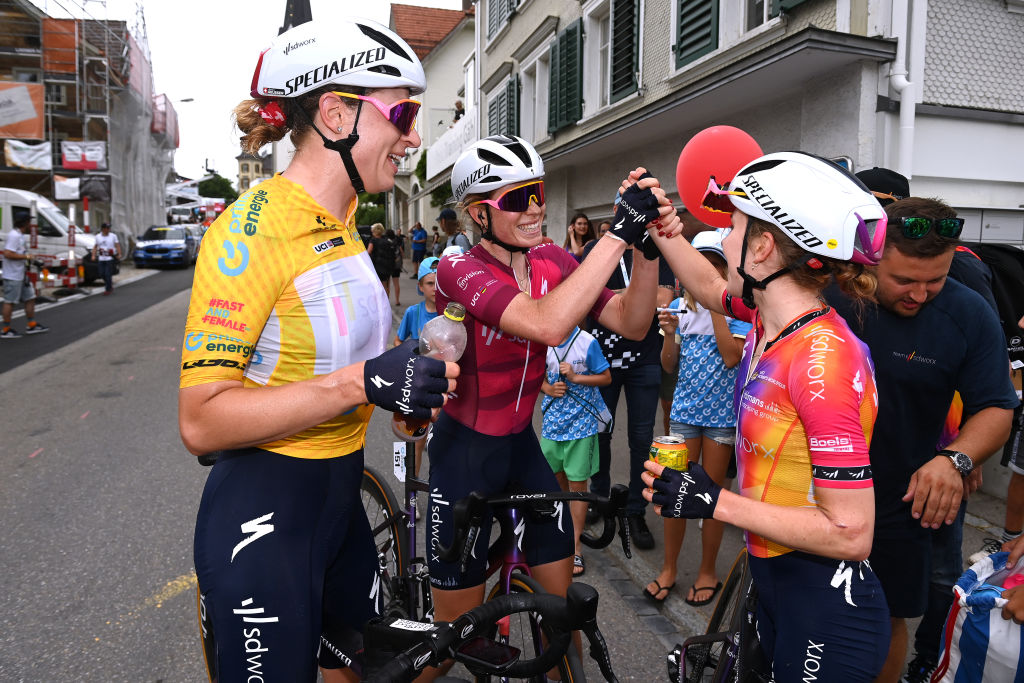
That we are talking about SD Worx again is a testament to their utter dominance this year. Since La Vuelta Femenina, they have lost just one race, a stage of last week’s Tour de Suisse Women, where they bagged first and second on GC with Marlen Reusser and Demi Vollering.
A team achieving this feat once in a season is unlikely, but Switzerland was the 14th occasion where the Dutch super team went 1-2, they even accomplished this feat at the Dutch Road Championships, won by Vollering, and last month filled all three podium steps at the GC of the Thüringen Ladies Tour. Although an accomplishment like this is highly unlikely at the Giro d'Italia Donne, we can still anticipate a dominant performance.
As SD Worx - and Boels-Dolmans before that - they have been the world’s leading team for years, winning almost everything there is to win, often more than once, and including four editions of the Giro. However, this year, it appears they might end up putting the best roster forward in an attempt to win the Tour de France Femmes, which is also in July.
They did this last year, too, and Vollering’s second place overall at the Tour de France Femmes, behind Annemiek van Vleuten, showed their strategy almost paid off.
Instead of sending their ‘A’ squad to Italy last year, Niamh Fisher-Black led the team with success, winning a second under-23 jersey and finishing fifth overall, which was an improvement on the 2021 edition, where she finished ninth overall and the 2020 edition where she finished 21st.
The New Zealander has had a slightly lighter programme than some of her colleagues so far this year, and her stage win on the final day of the Tour de Suisse, which was her first win on the WorldTour, suggests increased physical and mental maturity and that she is ready to improve further still.
Can she win the GC? It’s unlikely, but she will be riding the SD Worx wave of confidence.
A truncated route returns to Sardinia
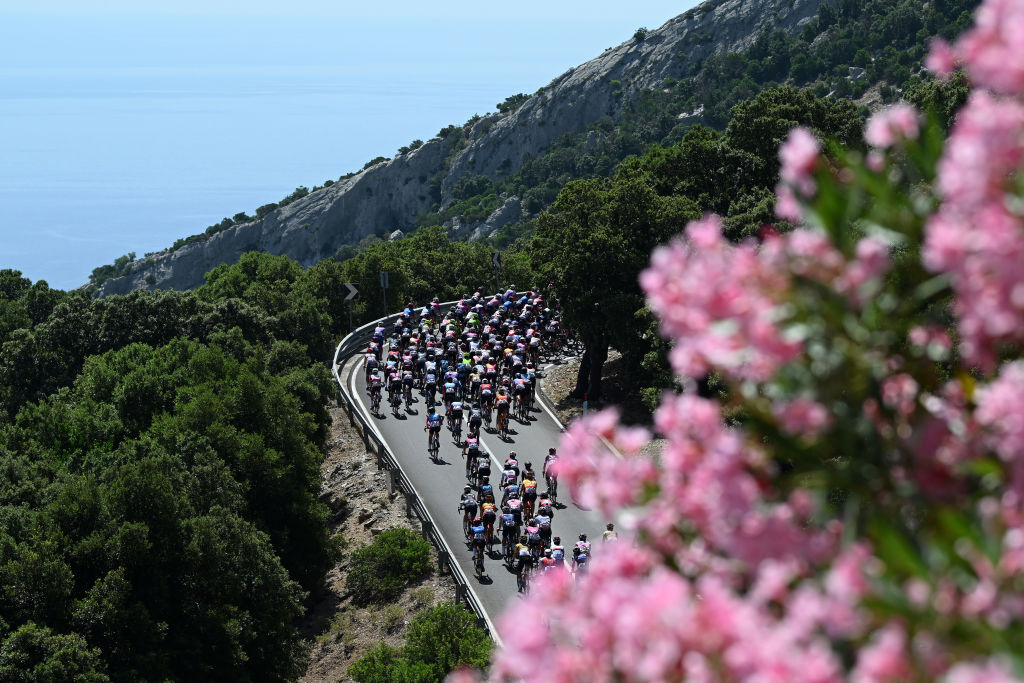
Last year’s 10 stages were spread over 11 days, allowing a travel day from Sardinia after the island hosted the opening three stages.
Then the race received considerable funding from the island’s government, and its return for 2023 suggests the same deal has been struck, the final two challenging stages being on the island.
However, rather than a travel day, the race has lost a stage, settling at only nine stages covering 968km.
The race begins with a 4.4km individual time trial in Chianciano in Tuscany, its closest point to the finish in Sardinia, but instead of crossing the Tyrrhenian Sea, the peloton heads in the opposite direction, north-east, then west with some long transfers in store.
Whatever the transfers, the route is the perfect canvas on which the peloton can paint entertaining, combative racing with punchy stages throughout. There are slim pickings for sprinters, though, only stage 3 into Modena looks nailed on for a bunch kick.
Time gaps after the pan-flat opening TT will be nothing compared to those that stage 2 will cause. A 10km climb close to the finish of the 102km stage into Marradi averages 5.8%, and though the stage may end with a reduced group sprint, it’s just as likely to be the race’s first GC day.
The race’s highest point, the Cima Coppi, comes on stage 5, at 143.3km, the longest stage between Salassa and Ceres, in the Alps north of Turin. Coming after only 26 of the 143.3km, the climb of Passo del Lupo might not decide the stage, that’s likely on later climbs, and certainly won’t decide the GC. That’s more likely on the very lumpy seventh day, which finishes with a tough uphill finish in the hills above Alassio on the Ligurian coast.
The Sardinian stages, which close the race, include a lot of climbing in the island’s north, and after stage 8’s punchy uphill final, the riders who make it to the end of stage nine will be grateful for the closing downhill 50km.
Who will wear the maglia rosa?
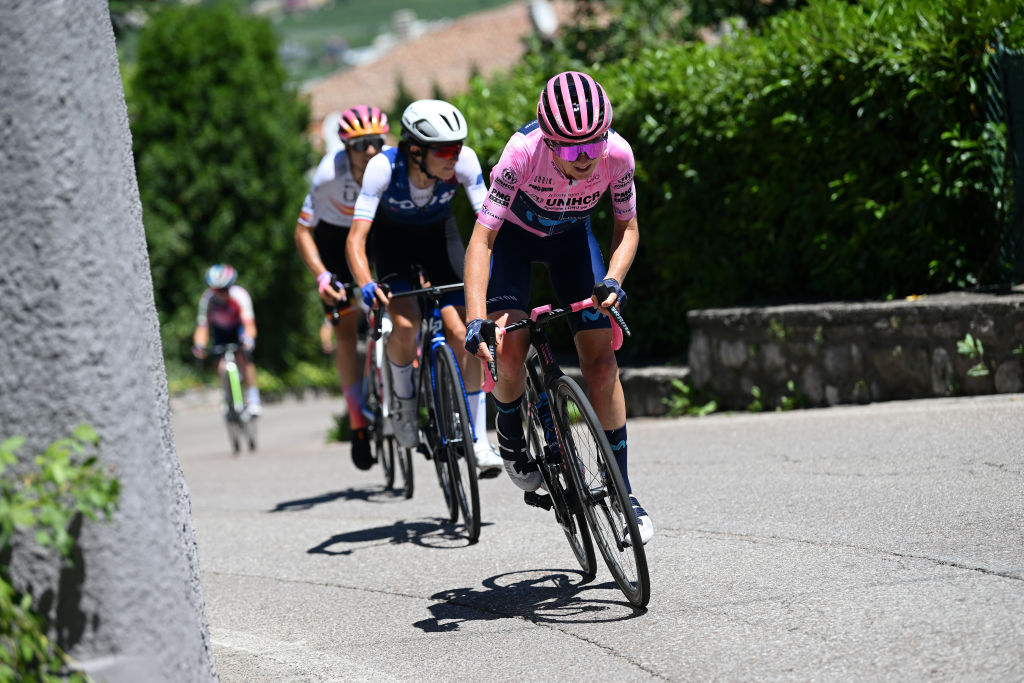
There is no better place to start than with Marianne Vos, by far the race’s most successful rider. As well as three GC victories, the Jumbo-Visma rider has a record 32 stage wins to go with 10 second places and 10 third places, and the punchy parcours suggest she will add to her success at this year’s race, maybe taking the race lead early on.
She’ll be in touch after the TT, and if she’s there at the end of stage 2, may well take the maglia rosa. However, her GC-winning days on the mountainous route are likely behind her, and we have to look elsewhere for who might win overall.
Despite her suboptimal season to date, Annemiek van Vleuten remains the favourite for the win, but it won’t be easy for the Movistar rider. The team always have a strong support roster, and Liane Lippert will be a very useful foil for the team as the team look to develop her into their GC rider of the future.
Second overall last year, Marta Cavalli would love nothing more than to win pink in her home race. She’s hugely ambitious and, after taking a while to recover from the physical and psychological injuries suffered in a horror crash at last year’s Tour de France Femmes avec Zwift, she’s back on form.
Just two weeks ago, she took her first victory of the season, winning the Hautacam stage of the ill-fated Tour Féminin International des Pyrénées, and in her, we may see the first home winner since Fabiana Luperini in 2008, especially with a strong FDJ-SUEZ team behind her.
As always, Elisa Longo Borghini will also be a contender but said she is looking for stage wins. Her Trek-Segafredo, set to be renamed Lidl-Trek with a new jersey design for the Giro Donne and onward, always field a strong squad but now have one of the peloton’s best climbers in Gaia Realini.
The 22-year-old climber has made a splash in her first WorldTour season, taking two wins, including out-kicking Van Vleuten to win stage 6 of La Vuelta, though it was her second place at Lagos de Covadonga, which proved her class and promise.
The Giro d'Italia Donne is always an unpredictable race, and this year, we can expect the peloton to keep us guessing all the way into the final stages in Sardinia.
Subscribe to Cyclingnews for unlimited access to our coverage of women's cycling.







